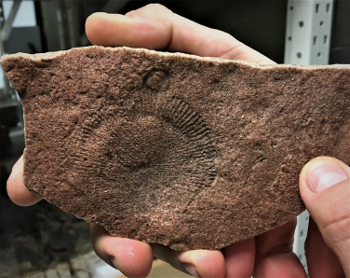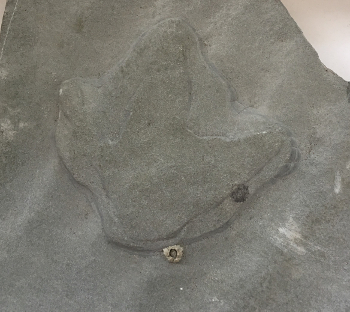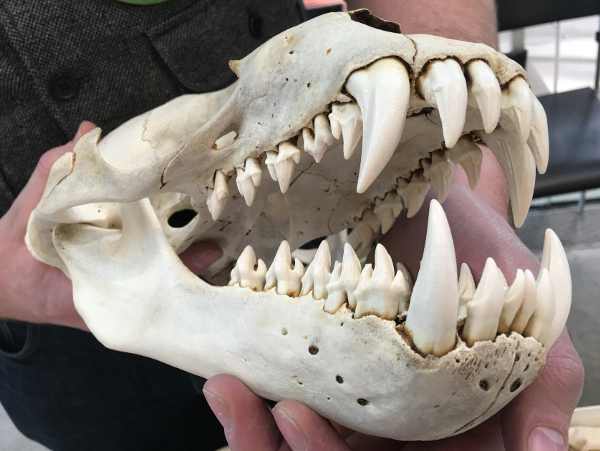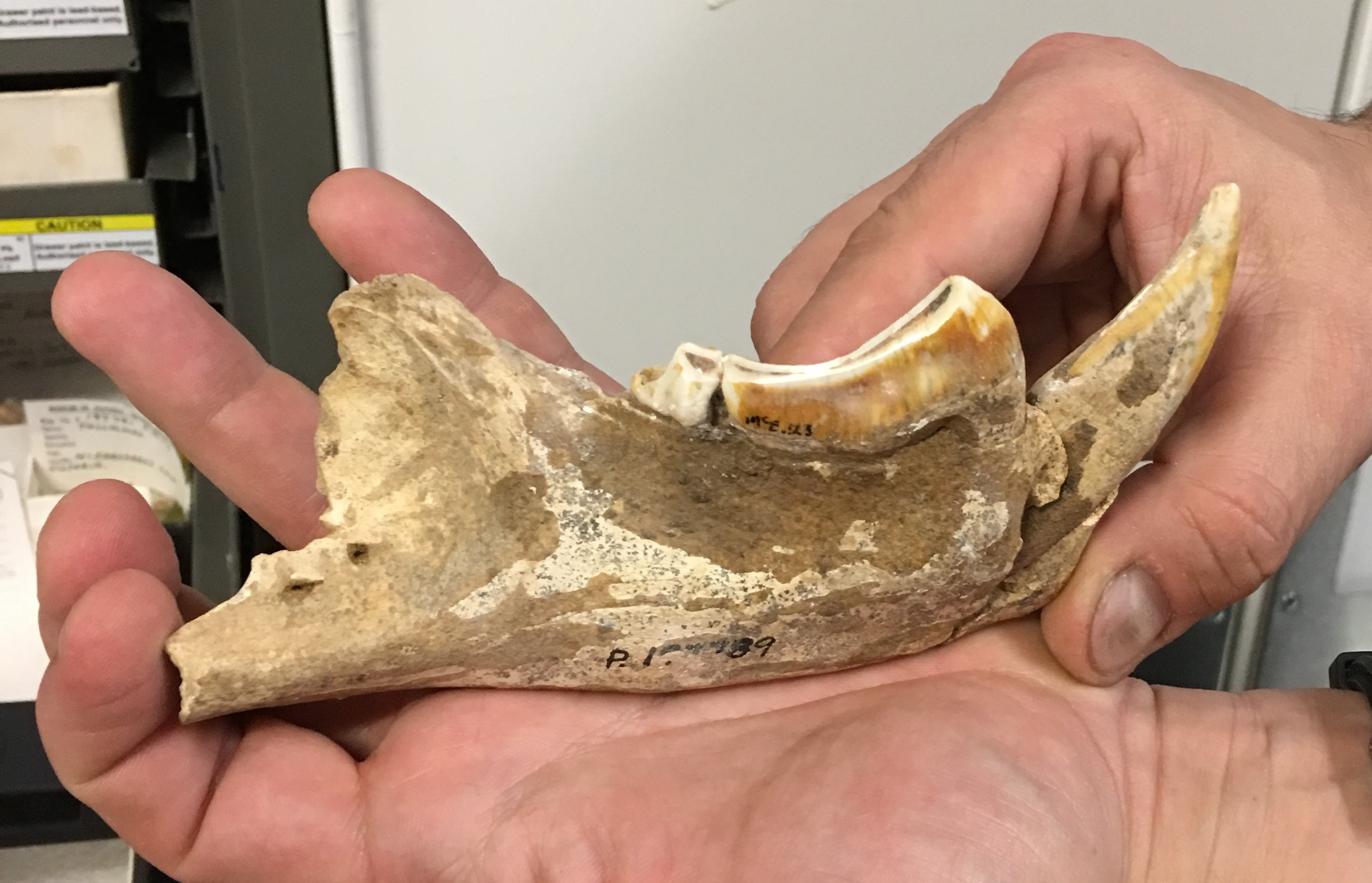
Dinosaurs Downunder
Do you know where to find fabulous beasts, for real?
In Ancient Australia.
First there were dinosaurs downunder, then megafauna. Both have been gone for a long time now. But some of their bones are still around. Even some of their footsteps! Come and meet a few fossils surviving from Australia’s prehistoric past.
(Special thanks to the paleontologists of Melbourne Museum for showing me these fabulous fossils and letting me take photos.)
Ancient Treasure
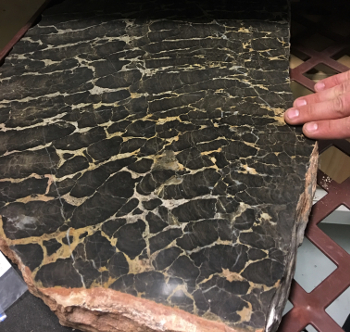
Really, REALLY, Old Plants
This fossil is almost a BILLION years old. It’s the oldest fossil in Museum Victoria.
It actually comes from the Northern Territory. What is it? Not a broken pavement. You are looking at layers of ancient algae. Algae are a type of plant that includes seaweed and pond scum. Once upon a time this algae lived on the bottom of a shallow sea. As sand settled over the algae, it had to grow upwards, maing the wavy columns you can see in the picture.
An Animal that Didn’t Poo
In this lump of rock, is the remains of a little animal that once lived in South Australia, in the Flinders Ranges. The Flinders Ranges are very dry now, but they were under the sea 600 million years ago.
This animal lived way, way before dinosaurs. It has no mouth, no stomach, and nowhere to poo. To eat, it soaked in microbes through its skin.
So how do scientists know its an animal and not a plant? It has left-right symmetry. That means, one side of its body is close to a mirror image of the other.
Australian Dinosaurs
Australia has many dinosaurs that aren’t found anywhere else. These pictures aren’t found anywhere else either! Alison Lloyd took them on an expedition inside Museum Victoria.
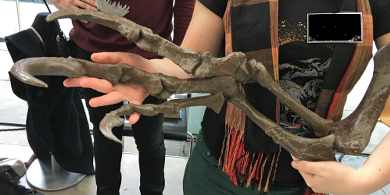
What lovely claws you have!
The terrifying talons you see here belong to Australovenator wintonensis. Australovenator was not a loving beast, despite its name. The Latin name actually means: australo=southern; venator=hunter; wintonensis=from Winton in Queensland. That makes sense, looking at those claws.
Australovenator was an ornithopod, which means it had feet like a bird. But it was 2 metres high and 5 metres long – bigger and more vicious than any emu you’ve ever met. You can see an artist’s sketch of how the whole animal might have looked here.
And what fine teeth you have!
This is the jawbone from a leaellynasaurus – a teensy, chicken-sized dinosaur. She scratched around in the forests of southern Victoria, about 110 million years ago, give or take a rather large few million years.
The tiny teeth are like black sesame seeds, with little ridges on them, for biting pine needles and ferns.
This is the first piece of leaellynasaurus discovered by scientists. Using just this little piece, the new species of dinosaur was named in 1989. The fossil is kept very safe within Museum Victoria.
You can find out more leaellynasaura on this museum website.
And what big feet you have!
This footprint was found in the Otways area of Victoria, not too far from the leaellynasaura fossil. It’s about the same age too. But it’s a bit big for a leaellynasaura. (Unless the leaellynasaura we have is a baby, which is possible.) The foot is about the size of an adult human hand.
Mighty Megafauna
After the dinosaurs died, more fantastic beasts took over downunder. These creatures were warm-blooded, like us, but still very BIG. So we call them ‘megafauna’. Read more about Australia’s gentle giants and bone-crunching carnivores…
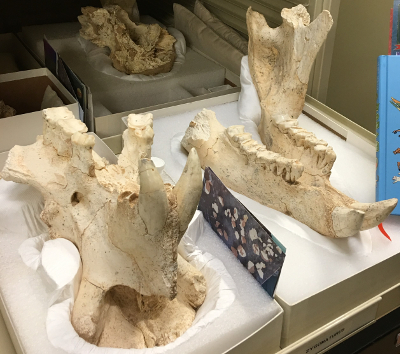
Mammoth-size marsupials
Australia’s marsupials are often smallish and cute – like koalas and kangaroos. The diprotodon was the largest marsupial that ever lived in Australia. It weighed as much as a truck. This is its skull, in two parts: left=top, right=bottom. It is about 50cm long. And see the tusks?!
Scientists think the diprotodon’s brain was only as big as an orange, and the rest of its head might have been empty space. In other words, this animal was an airhead. Why? The diprotodon needed big jaws and big muscles for chomping through a lot of leaves, but empty space is lighter and easier to carry than brains!
A nasty bite
This snarly set of teeth belong to a marsupial from Tasmania. A meat-eating one, as you can see from the pointy teeth. Not the Tasmanian devil, but the thylacine, or Tasmanian tiger.
The thylacine survived until Europeans arrived in Australia. The last known one died in a zoo in 1936. Thylacines are now extinct, we think…
Another nasty bite
This jawbone is from a thylacoleo, a marsupial lion. See it’s amazing long rear tooth, like the blade on a guillotine. (Those machines that slice paper – except this blade wasn’t for paper…)
Thylacoleo were possibly here when the First Australians (people that is) arrived. But they died out tens of thousands of years ago.
